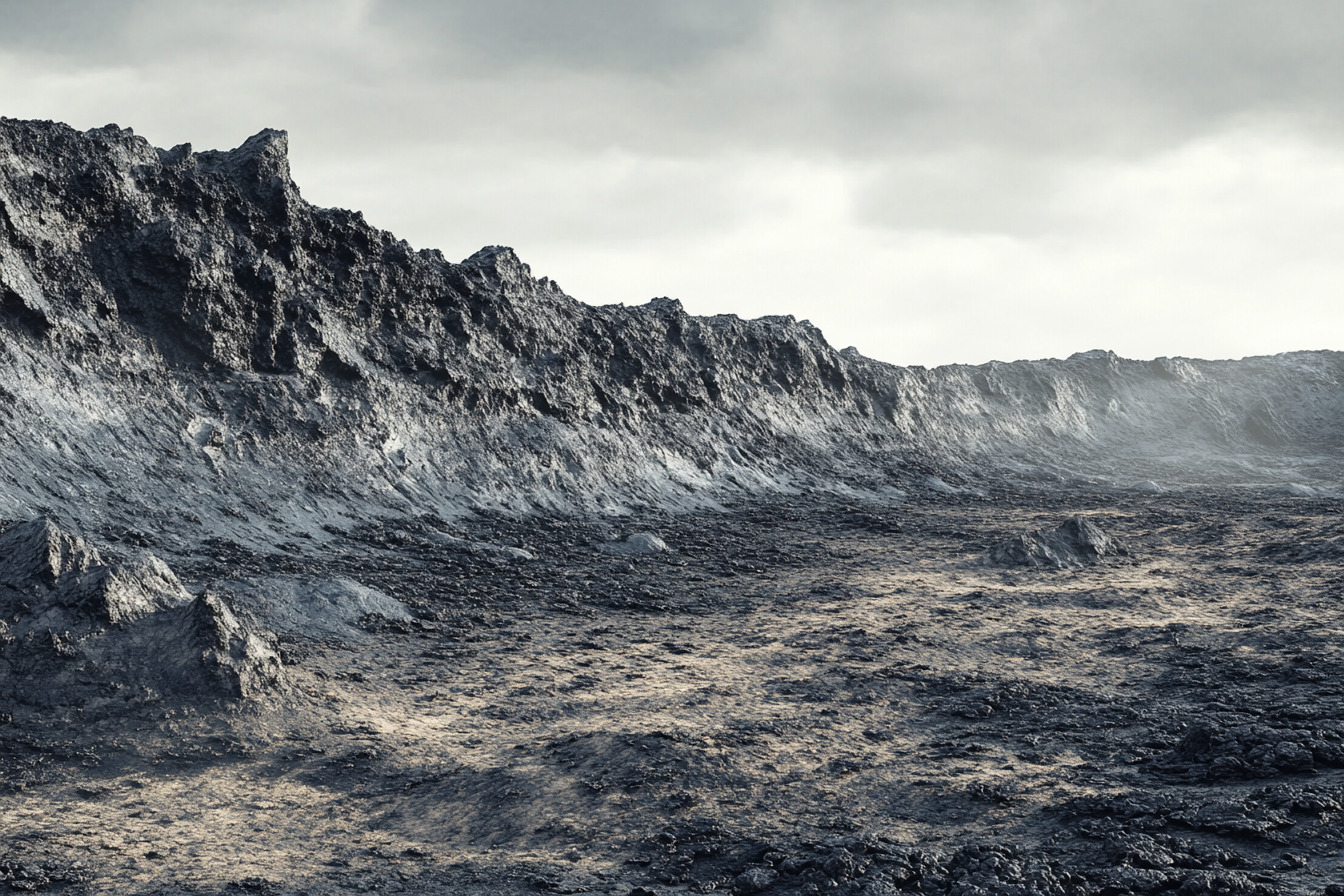Aszurka Escarpment
Pronunciation: as-ZURK-a
Map Index: G-3, G-4
Location: South central Beorlan
Geography: The great volcano of Krakurod dominates the south-central portion of Beorlan with its past lava eruptions responsible for the landscape that exists today. The Aszurka Escarpment sits at the southern edge of Vornlithdor and formed at the boundary edge of an old massive lava flow. These old lava flows, now cooled and hardened, have piled up over the years to form an escarpment that ranges from 20 to 80 feet in height. This enormous black wall drops off suddenly to the south and runs for over 180 miles. For much of this length, the wall presents serious travel challenges to anyone wishing to travel in a north-south direction. However, many spots exist where the angle of the escarpment becomes less steep allowing passage up or down.
Primary Population: None
Secondary Population: None
Minor Population: None
Climate: The region surrounding the escarpment possesses an arid tropical climate, dominated by scorching temperatures tempered somewhat by the shade provided by ash filled skies. Rainfall remains scarce, yet when strong storms manage to reach this forsaken land, the impermeable ash layers cause torrents of runoff, often carving deep gullies into the steep cliffs of the escarpment. Once dry, these gullies often provide a passage between the upper and lower levels.
Wildlife: Little vegetation or wildlife exists on the upper Vornlithdor side of the escarpment. Below occasional herds of antelopes, gazelles, and wild horses graze the thin grasses of the broken plains of Jorrandir. Leopards remain the chief predator near the escarpment.
Humanoids: Fire Goblins inhabit the nearby kingdom of Gok Grusmak and utilize the great escarpment as a defensive wall for their kingdom. Goblin scouts often hide away near known areas where travelers can access trails to ascend and descend the escarpment. Goblins have built watchtowers in a few strategic areas keeping watch over the northern area of Jorrandir.
Monsters: Black lava lizards frequently dwell along the vertical surface of the wall using large fissures as places of shelter.
History: Many hundreds of years ago a major eruption took place on Krakurod which sent massive amounts of lava flowing southward. Over a series of weeks, the lava piled higher until it reached a height of up to 80 feet in some places. The eruptions occurred in such a manner that a great wall of black rock formed across the northernmost plains of Jorrandir, creating the Aszurka Escarpment.
Today: The long steep escarpment of Aszurka looms over northern Jorrandir. From the broken plains the view northward looks threatening with a long steep uneven black wall extending across the horizon while the gloomy ash filled skies over Vornlithdor appear menacing.
Map Index: G-3, G-4
Location: South central Beorlan
Geography: The great volcano of Krakurod dominates the south-central portion of Beorlan with its past lava eruptions responsible for the landscape that exists today. The Aszurka Escarpment sits at the southern edge of Vornlithdor and formed at the boundary edge of an old massive lava flow. These old lava flows, now cooled and hardened, have piled up over the years to form an escarpment that ranges from 20 to 80 feet in height. This enormous black wall drops off suddenly to the south and runs for over 180 miles. For much of this length, the wall presents serious travel challenges to anyone wishing to travel in a north-south direction. However, many spots exist where the angle of the escarpment becomes less steep allowing passage up or down.
Primary Population: None
Secondary Population: None
Minor Population: None
Climate: The region surrounding the escarpment possesses an arid tropical climate, dominated by scorching temperatures tempered somewhat by the shade provided by ash filled skies. Rainfall remains scarce, yet when strong storms manage to reach this forsaken land, the impermeable ash layers cause torrents of runoff, often carving deep gullies into the steep cliffs of the escarpment. Once dry, these gullies often provide a passage between the upper and lower levels.
Wildlife: Little vegetation or wildlife exists on the upper Vornlithdor side of the escarpment. Below occasional herds of antelopes, gazelles, and wild horses graze the thin grasses of the broken plains of Jorrandir. Leopards remain the chief predator near the escarpment.
Humanoids: Fire Goblins inhabit the nearby kingdom of Gok Grusmak and utilize the great escarpment as a defensive wall for their kingdom. Goblin scouts often hide away near known areas where travelers can access trails to ascend and descend the escarpment. Goblins have built watchtowers in a few strategic areas keeping watch over the northern area of Jorrandir.
Monsters: Black lava lizards frequently dwell along the vertical surface of the wall using large fissures as places of shelter.
History: Many hundreds of years ago a major eruption took place on Krakurod which sent massive amounts of lava flowing southward. Over a series of weeks, the lava piled higher until it reached a height of up to 80 feet in some places. The eruptions occurred in such a manner that a great wall of black rock formed across the northernmost plains of Jorrandir, creating the Aszurka Escarpment.
Today: The long steep escarpment of Aszurka looms over northern Jorrandir. From the broken plains the view northward looks threatening with a long steep uneven black wall extending across the horizon while the gloomy ash filled skies over Vornlithdor appear menacing.

